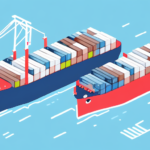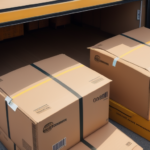The Ultimate Guide to Finding the Right E-Commerce Shipping Solution
In the competitive world of e-commerce, choosing the right shipping solution can make or break your business. The shipping method you choose not only affects your delivery times and costs but also the overall customer experience. Here, we provide a comprehensive guide to help you navigate the complex world of e-commerce shipping. We cover everything from types of shipping solutions to packaging materials, and from dealing with returns to customer service. By the time you’re done reading, you’ll be equipped with all the knowledge you need to find the perfect shipping solution for your business.
Why Choosing the Right Shipping Solution is Crucial for Your E-Commerce Business
Before diving into the different types of shipping solutions available, let’s understand why selecting the right one is essential. Shipping is a key part of the customer experience. If your shipping times are too slow or your rates too high, customers may choose to shop elsewhere. Conversely, if your shipping is fast, reliable, and affordable, they’ll be more likely to choose you over your competitors. Additionally, shipping can significantly impact your profitability. Shipping costs can eat into your margins if you’re not careful, so it’s essential to find a provider that offers the right mix of affordability and reliability.
Understanding the Different Types of E-Commerce Shipping Solutions
There are several types of e-commerce shipping solutions available, each with its own pros and cons. Let’s take a closer look at each:
Carrier Shipping
Carrier shipping is the most common type of shipping for most e-commerce businesses. This solution involves partnering with major carriers such as UPS, FedEx, or USPS to handle your shipping needs. Carrier shipping can offer a range of options, such as ground, 2-day, and next-day delivery, allowing you to customize your shipping to your customers’ needs. However, carrier shipping can also be expensive, particularly for smaller businesses that don’t have the negotiating power to secure better rates.
Third-Party Logistics (3PL)
A Third-Party Logistics (3PL) provider handles all aspects of your logistics needs, from storage to shipping. Working with a 3PL provider can help streamline your shipping operations, as they can manage all your inventory and shipping needs in-house. This solution can be particularly appealing to larger e-commerce businesses that wish to outsource all their logistics needs to an expert third-party provider. However, 3PL solutions can be expensive, and you may lose a certain level of control over your shipping operations. For more information on 3PL services, visit the 3PL Logistics website.
Digital Freight Forwarders
Digital freight forwarders specialize in providing shipping solutions specifically for e-commerce businesses. These providers offer a range of shipping options and negotiate rates with different carriers to find the best solution for your business. Digital freight forwarders can also offer additional services such as customs clearance and return management. However, digital freight forwarders may have limited coverage areas or restrictions on the types of products they can ship.
Factors to Consider When Choosing an E-Commerce Shipping Solution
Now that we’ve covered the different types of e-commerce shipping solutions, let’s look at some of the factors you need to consider when deciding which solution is right for your business:
Shipping Costs
Shipping costs can have a significant impact on your profitability. You’ll need to weigh the costs of different solutions against the delivery speed and quality of service that they offer. According to a survey by Statista, shipping costs account for approximately 10% of the total expenses for e-commerce businesses.
Delivery Times and Locations
You’ll need to consider the delivery time and location coverage that different shipping solutions can offer. If your business ships internationally, for example, you’ll need to find a provider that can handle customs clearance in different countries. Efficient international shipping can increase customer satisfaction by up to 30%, according to International Shipping Association.
Product Types and Packaging Needs
The products you sell and their packaging requirements can also affect your choice of shipping provider. Certain types of products may require special handling or packaging, and you may need to find a provider with experience in shipping those types of products.
Customer Support
Customer support is particularly critical for e-commerce businesses. You’ll need to find a provider with reliable and accessible customer service that can help you quickly resolve any shipping issues or questions that may arise. A survey by Customer Contact Week found that 65% of consumers consider customer service effectiveness when choosing a retailer.
Top E-Commerce Shipping Providers: A Comparison Guide
Now that you understand the different types of shipping solutions available, let’s look at some of the most popular e-commerce shipping providers and how they compare:
UPS
UPS is a global carrier that offers a range of shipping options, including ground, air, and international shipping. Their services are all compliant with customs regulations, making them particularly appealing for cross-border e-commerce shipping. However, UPS can be expensive for smaller businesses, and their customer service can sometimes be slow.
FedEx
FedEx is another global carrier with a range of shipping options. They offer a user-friendly interface and reliable delivery times. However, FedEx may not be as competitive on pricing as some other providers, and their customer service can sometimes be challenging to reach.
USPS
USPS is typically the most affordable option for e-commerce businesses. They offer a range of shipping options, such as Priority Mail and Express Mail, and have extensive coverage across the US. However, USPS can be slower than other providers, and their delivery dates can sometimes be unreliable, particularly during peak periods.
ShipBob
ShipBob is a Third-Party Logistics (3PL) provider that offers warehousing and shipping services for e-commerce businesses. They focus on fast and accurate fulfillment and offer free integrations with popular e-commerce platforms such as Shopify and WooCommerce. However, ShipBob can be expensive for smaller businesses, and their customer service can sometimes be slow.
ShipStation
ShipStation is a digital freight forwarder that works with a range of carriers. They offer multi-channel order management and support for a variety of e-commerce platforms. Their user-friendly interface and high-quality customer service have made them a popular choice for many e-commerce businesses. However, their rates may be higher than some other similar providers.
How to Negotiate Better Shipping Rates with Your Provider
Once you’ve selected a provider that meets your needs, negotiating better rates can be a great way to increase your profitability. Here are some tips to help you negotiate better shipping rates:
Research Your Options
Do your research to understand what other providers in the market are offering. This knowledge will give you leverage during negotiations and help you secure the best possible deal.
Show Commitment to a Long-Term Partnership
Providers are more likely to offer lower rates to customers whom they believe will work with them over the long term. Highlighting your commitment to a long-term partnership can be an effective way to secure better rates.
Be Willing to Compromise
Providers may be more willing to negotiate on rates if you’re willing to compromise on payment terms or delivery times. Be prepared to make concessions in exchange for more affordable rates.
Tips for Streamlining Your E-Commerce Shipping Process
Streamlining your e-commerce shipping process can help you save time and increase your efficiency. Here are some tips to help you streamline your shipping operations:
Automate Your Shipping Process
Use shipping software or an e-commerce platform that integrates shipping workflows to automate as much of your shipping process as possible. This automation can significantly reduce manual labor time and increase your accuracy.
Bulk Process Orders
Processing orders in bulk instead of one-by-one can save you considerable time and increase your efficiency. Use software to batch up orders and print shipping labels to speed up the process.
Choose the Right Packaging Materials
Choosing the right packaging materials such as boxes, envelopes, and packing materials can help you save on shipping costs and minimize the risk of damage in transit.
Common E-Commerce Shipping Mistakes to Avoid
Mistakes in shipping can cost you time, money, and damage your reputation. Here are some common e-commerce shipping mistakes to avoid:
Incorrect Shipping Addresses
Incorrect shipping addresses are a common error that can lead to delays in delivery and additional costs. Use software to automatically validate addresses to reduce errors.
Inadequate Packaging
Inadequate packaging can lead to damage in transit, increasing your costs and damaging your reputation. Use high-quality packaging materials that offer adequate protection for your products.
Not Having a Clear Returns Policy
Not having a clear returns policy can lead to confusion and frustration for your customers. Ensure that you have a clear and simple returns policy in place and communicate it effectively to your customers.
The Importance of Tracking and Visibility in E-Commerce Shipping
Tracking and visibility can significantly enhance the customer experience. Providing your customers with real-time tracking information can give them peace of mind and ensure that they’re ready to receive their package when it arrives. Additionally, tracking can help you identify potential delivery issues before they occur and minimize the risk of lost shipments.
How to Choose the Best Packaging Materials for Your E-Commerce Products
Choosing the right packaging materials can help you reduce your shipping costs and ensure that your products arrive safely. Here are some tips for selecting the best packaging materials:
Choose the Right Box or Envelope Size
Choosing the right box or envelope size can reduce your shipping costs by minimizing the amount of dead space in your package.
Use High-Quality Cushioning Materials
Using high-quality cushioning materials such as bubble wrap or foam can protect your products from damage in transit.
Consider Environment-Friendly Options
Choosing environment-friendly packaging materials can help you reduce your carbon footprint and appeal to eco-conscious customers.
Dealing with Returns: Tips for Making the Process Efficient and Cost-Effective
Dealing with returns can be time-consuming and costly. Here are some tips to help you make the returns process efficient and cost-effective:
Create a Clear Returns Policy
A clear returns policy can reduce confusion and frustration for your customers and streamline the returns process for you.
Use Return Shipping Labels
Providing pre-paid return shipping labels can make returning products more convenient for your customers and minimize the risk of errors in the shipping process.
Consider Implementing Restocking Fees
Charging restocking fees can discourage excessive returns and cover some of the costs associated with handling and processing those returns.
The Role of Customer Service in Ensuring a Smooth E-Commerce Shipping Experience
Customer service is a key component in ensuring a smooth e-commerce shipping experience. Providing responsive and helpful customer service can help you quickly address any shipping issues that arise and resolve them to your customers’ satisfaction. Offering multiple channels of communication such as phone, email, and live chat can help you provide flexible and timely support.
Future Trends in E-Commerce Shipping: What You Need to Know
The world of e-commerce shipping is constantly evolving. Here are some key trends to watch for in the coming years:
Drones and Autonomous Vehicles
Drones and autonomous vehicles could potentially revolutionize the shipping industry by providing faster and more efficient delivery options.
Localization
Localized shipping solutions that cater to specific regions and delivery preferences are becoming increasingly popular. Such solutions can offer more personalized and flexible options for customers.
Integration with New Technologies
Integration with new technologies such as blockchain and artificial intelligence can help streamline shipping operations, reduce costs, and improve efficiencies.
Case Studies: Successful E-Commerce Businesses and Their Shipping Strategies
Looking at successful e-commerce businesses can provide valuable insights into effective shipping strategies. Here are some examples:
Zappos
Zappos offers free shipping and returns, a strategy that has been instrumental in their success. They also invest heavily in customer service, providing 24/7 support through phone, email, and social media.
Amazon
Amazon offers a range of shipping options, including Prime two-day and one-day delivery. They also focus heavily on speed and accuracy in their shipping operations, investing in advanced automation technology to increase efficiency.
Conclusion: Finding the Right E-Commerce Shipping Solution for Your Business
Choosing the right e-commerce shipping solution can be a daunting task, but by understanding the different types of solutions, the factors to consider, and the best practices for streamlining your shipping operations, you can make an informed decision. Remember, shipping is a key part of the customer experience, so invest in a solution that prioritizes speed, affordability, and reliability. By doing so, you’ll ensure that your customers receive the best possible experience and that your business remains competitive in the ever-changing e-commerce landscape.






















